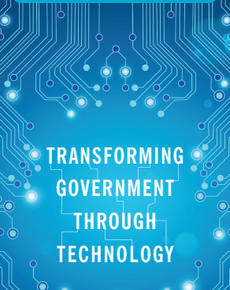
Investing in Technology Can Enable Government to Transform Service Delivery and Reduce Costs

Blog Contributing Author: Haynes Cooney, Senior Managing Consultant, IBM
This week, the Office of Management and Budget will release its initial budget request to Congress for FY 2018 – following the general timeline that is customary with a change in Administration. The initial request will be followed by a more detailed presentation to the Congress later this spring.
A central tenet of the new administration’s budget request is premised on the federal government running more effectively at a reduced cost. Today, our Center is releasing a special report, “Transforming Government Through Technology” as a companion piece to a more detailed report recently published by the Technology CEO Council in which the IBM Center participated, titled “The Government We Need." The report highlights key findings and recommendations that can help government leaders understand how best to leverage and scale past successes to benefit citizens and taxpayers.
The report demonstrates that by deploying technology effectively, based on analysis of what works, agencies can direct resources to initiatives that both lower costs and improve outcomes. Such strategies lead to better returns for the taxpayer than indiscriminate cuts that often address cost management but not service delivery. Indeed, the report shows that by using modern interconnected technologies and processes common to the private sector, agencies can realize sustainable cost reductions of more than $1 trillion over the next 10 years.
Achieving cost reductions and improving service, however, will require technological innovations that support improved processes and decision-making. The government must expand current efforts to modernize its IT portfolio and associated processes. This will add value by enabling agencies to meet their missions more quickly and completely, with less overhead, lower costs and reduced risk.
The following four strategies are key to this endeavor.
- Improving resource management
- Improving government decision making
- Investing in modern technology
- Optimizing processes
The first and fourth categories address strategic pathways for improving effectiveness, while the second and third focus on tools that can lead to greater efficiencies. The chart below highlights opportunities for each.
The cost-reduction estimates shown here were derived through analyzing specific examples featured in the TCC study, extrapolated to reflect the size and scope of the federal government. Cost-reduction figures reflect the total estimated opportunity over a 10-year period, and they may necessitate additional investments in people, processes and technology.
Realizing these benefits will also require a sustained focus on implementation to achieve positive and significant results. The report notes four steps that can support effective implementation:
- Take an enterprise/cross-government perspective
- Empower the federal CIO
- Incorporate industry best practices
- Prioritize and sequence implementation
In addition, our Center has already started to review how implementation may be achieved in each area, through a series of posts that commenced last week with a two-part assessment of how cognitive category management can identify $340 billion in cost reductions over the next decade.
The practices and recommendations summarized in this special report provide a roadmap for government leaders to transform activities within and across agencies by adopting a business-like approach. The insights are reinforced by many of the Center’s past studies that similarly examine opportunities for improving government operationsthough a business-like approach. We hope that new leaders find these insights helpful in continuing the effort to modernize government through effective use of technology.



